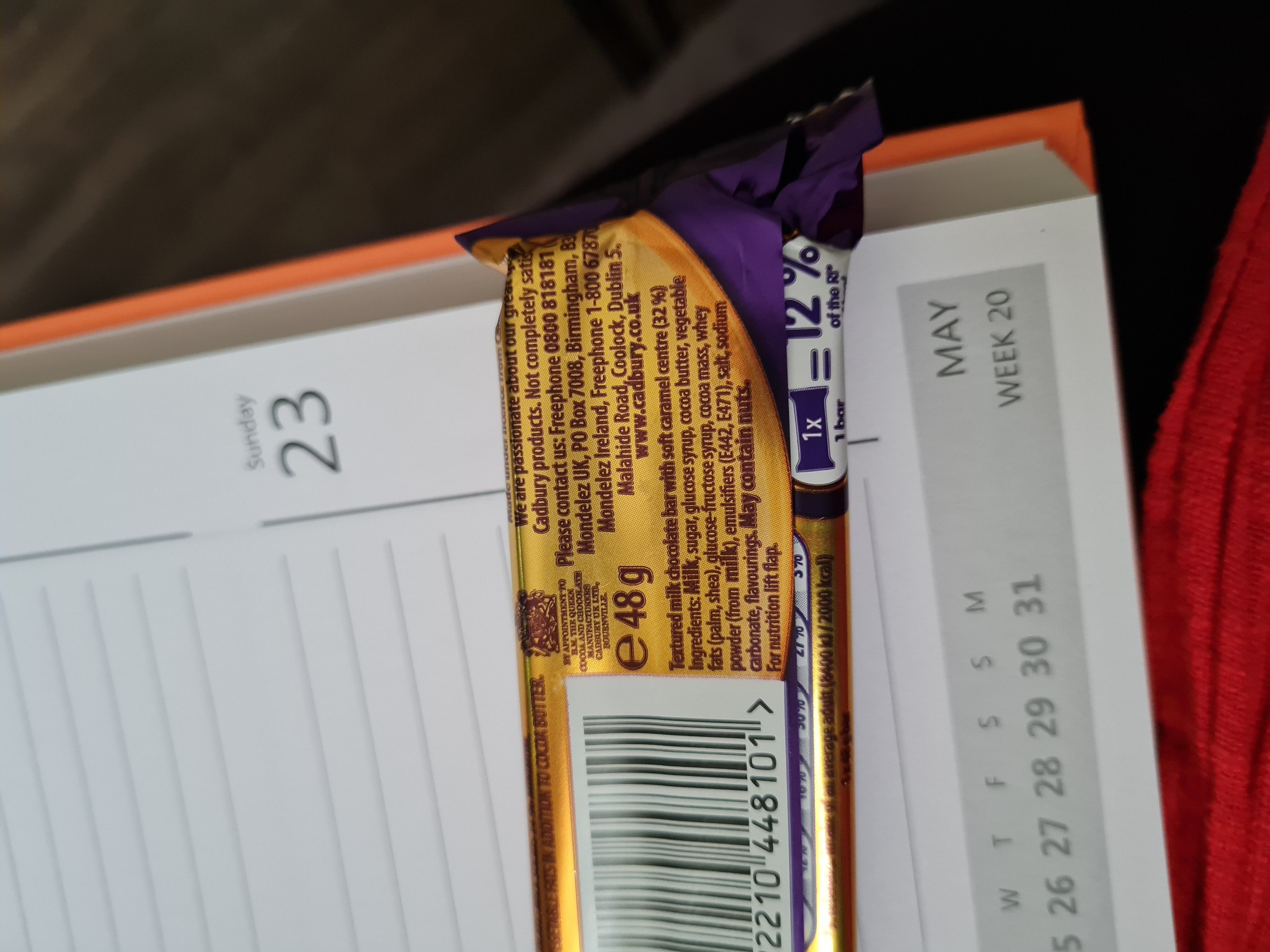Wispa Gold - Cadbury - 48 g
This product page is not complete. You can help to complete it by editing it and adding more data from the photos we have, or by taking more photos using the app for Android or iPhone/iPad. Thank you!
×
Barcode: 7622210448101 (EAN / EAN-13)
Common name: Milk chocolate bar with caramel
Quantity: 48 g
Packaging: Plastic, Film, Mixed plastic-sleeve
Brands: Cadbury
Categories: Snacks, Sweet snacks, Cocoa and its products, Confectioneries, Bars, Chocolate candies, Bars-covered-with-chocolate, Textured milk chocolate bar with soft caramel centre
Labels, certifications, awards: Vegetarian
Stores: Tesco
Countries where sold: Ireland, United Kingdom, United States
Matching with your preferences
Environment
Packaging
Transportation
Threatened species
Report a problem
Data sources
Product added on by andre-o-mob
Last edit of product page on by wylter.
Product page also edited by autorotate-bot, inf, kiliweb, openfoodfacts-contributors, org-database-usda, packbot, scrypt, swipe-studio, yuka.VExsZUtZNDZ2OWs3bmNjSDFDR05vdUJKemNHc0IwV09JclJJSUE9PQ, yuka.sY2b0xO6T85zoF3NwEKvlhR-T_jfnxf-Bjzmo0Sl1N6oE6zDX_F72LnWa6s.










